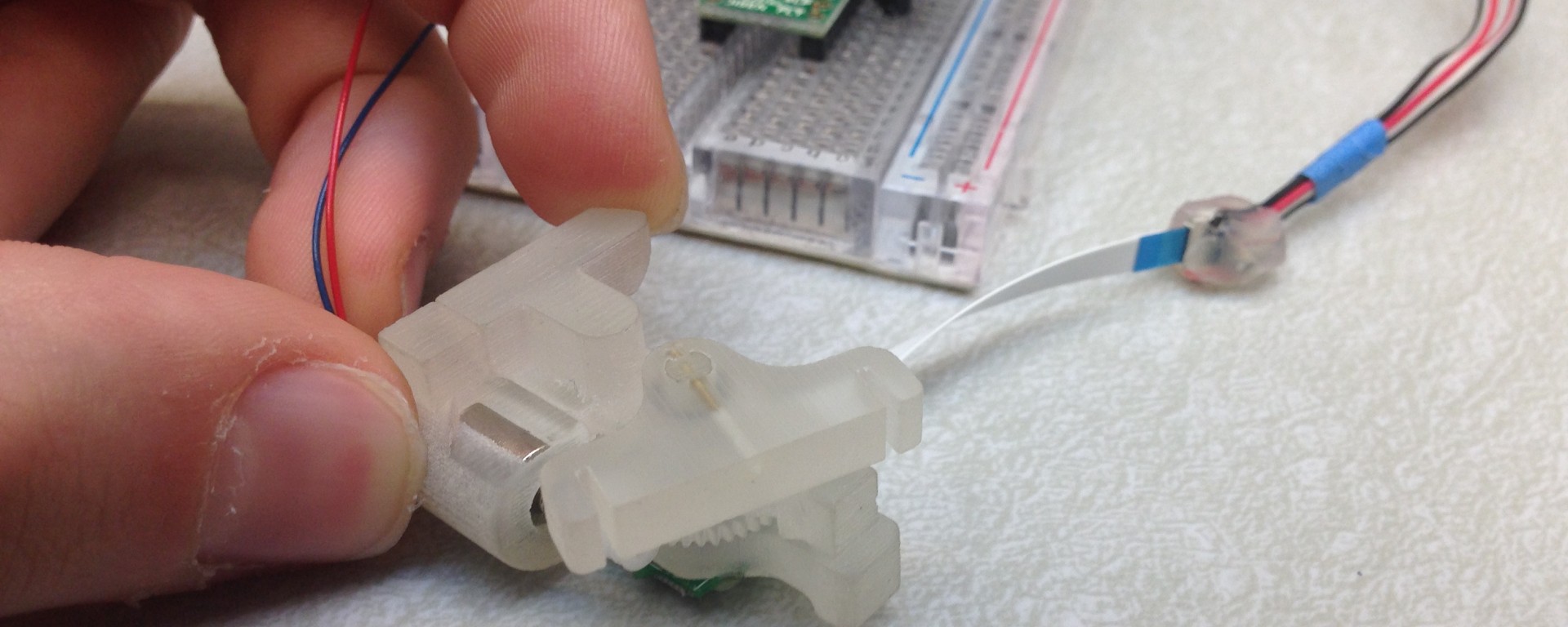The goal of this project is to create micro-robots that can simulate standard insect/animal motions such as walking and running while being able to jump over encountered obstacles. The simulation of jumping mechanisms found in nature on fully mechanical robots can be used to better understand how and why they are used.
Research Summary*
Students: Andrew Kooker and Casey Duckering
Professor/Sponsor: Professor Robert Full
Mentor: Chen Li
Sub Area: Mechatronics
Research Project Title: Micro-Robot with Ambulating and Jumping Abilities: A modification of the
Biomimetic Millisystems Lab robotics for testing and analysis on animal locomotion processes
Abstract
The goal of this project is to create micro-robots that can simulate standard insect/animal motions such as walking and running while being able to jump over encountered obstacles. The simulation of jumping mechanisms found in nature on fully mechanical robots can be used to better understand how and why they are used. Designs for robots can be created by understanding the dynamic effects of a jumping ability on motion when encountering obstacles, and simulating them effectively.
The initial step of our project dealt with simulating the simple motion of jumping on micro-robots that could already walk and run. It was important to analyze different methods of jumping from quick actuation to elastic storage; for the ability to continuously jump on command, the method of quick actuation seemed ideal. We created an actuating hinge mechanism in SolidWorks and developed the basic skeletal models for the robot in AutoCAD. By using rapid-prototyping techniques such as 3D printing and laser cutting, we were able to quickly bring these computer renditions to life for physical testing. We integrated mechanical and electrical components like gearing systems and microcontrollers for actuation, and combined these assemblies with the base-skeleton of our robot. After writing software to test the system, we analyzed the effectiveness of our design based on the robot performance and developed a second iteration of the robot accordingly.
Throughout the design process, we were required to focus on key decisions like material choice, specific component purchases, and overall integration methods. We developed many iterations of software to efficiently test the robots, and made many design changes to the jumping mechanism and robot body itself. We were also able to learn principles of re-design by taking already-developed robotic components from the Biomimetic Millisystems Lab, and further modifying them to fit our needs.
We compared the effectiveness of our designs among iterations, and mapped out performance goals for future generations of the robots. We plan to continue modifying current robot designs and creating custom completely new designs for jumping-specific robots in the future. We also hope to continue the development of unique electronic components and software to seamlessly integrate with our mechanical robots.
*Source: Berkeley Mechanical Engineering Department, www.me.berkeley.edu/sites/default/files/undergraduate/Design.pdf (end of first page)
